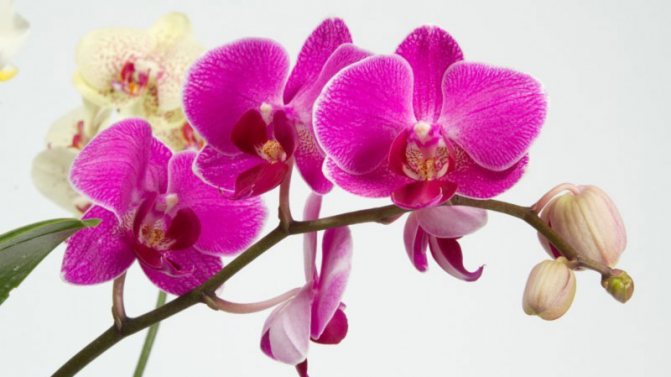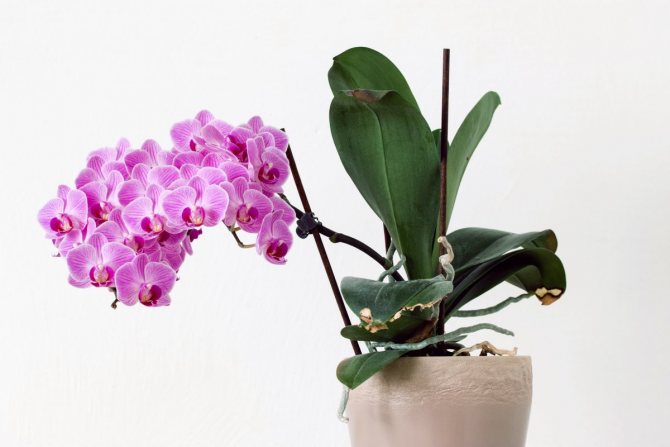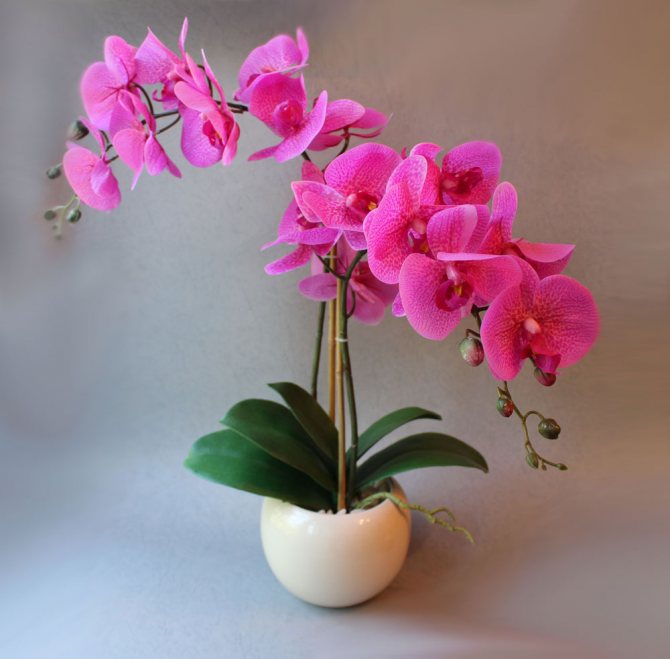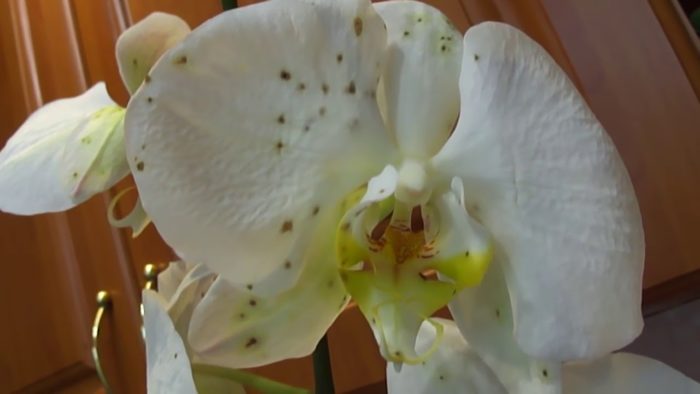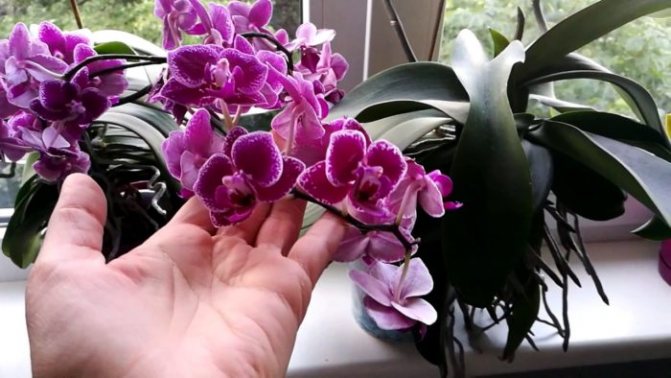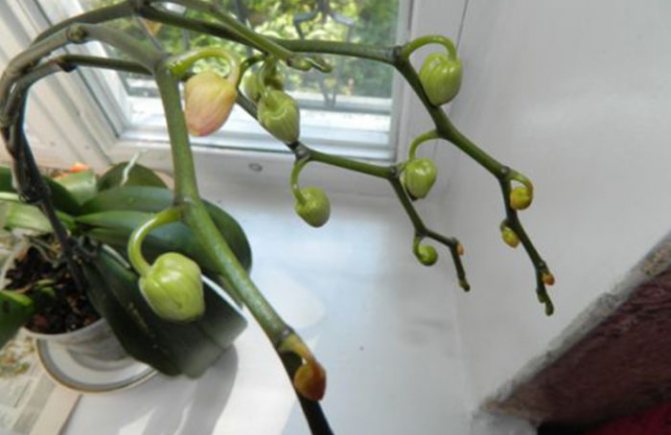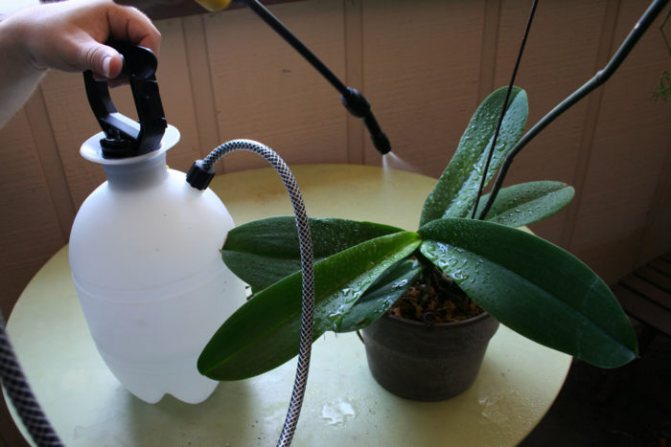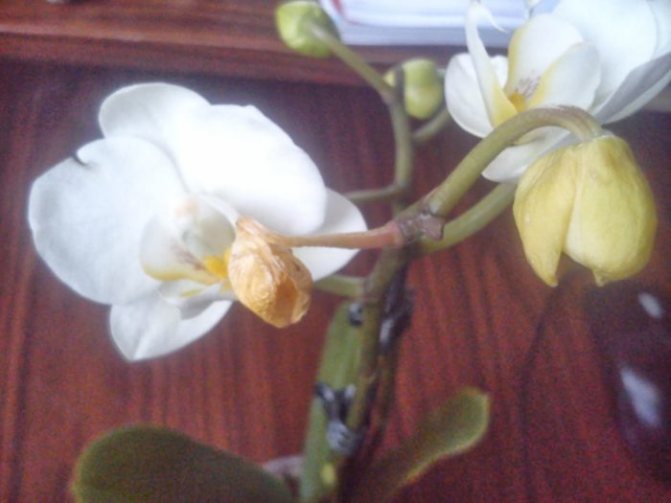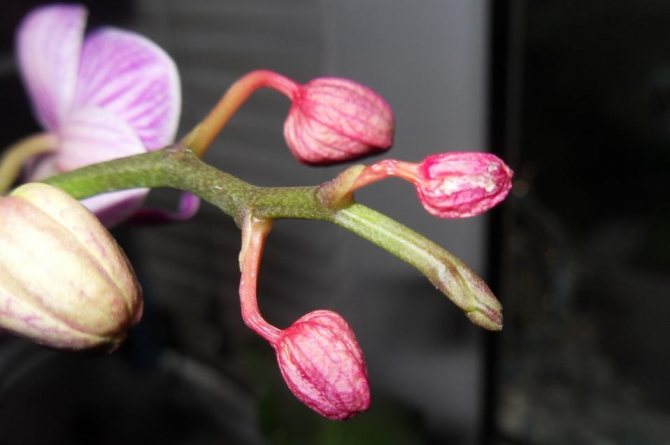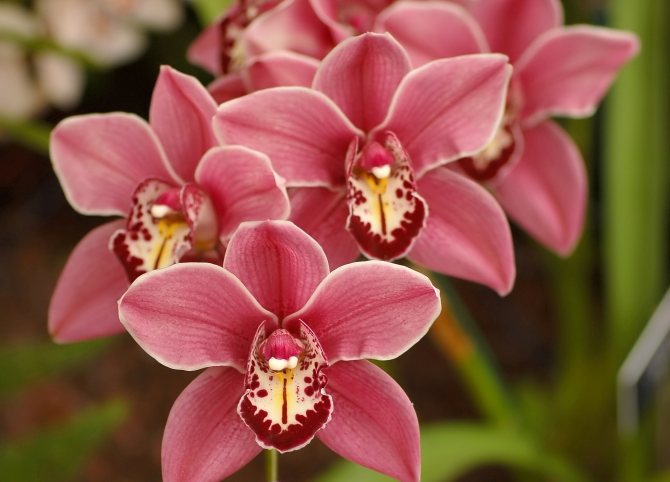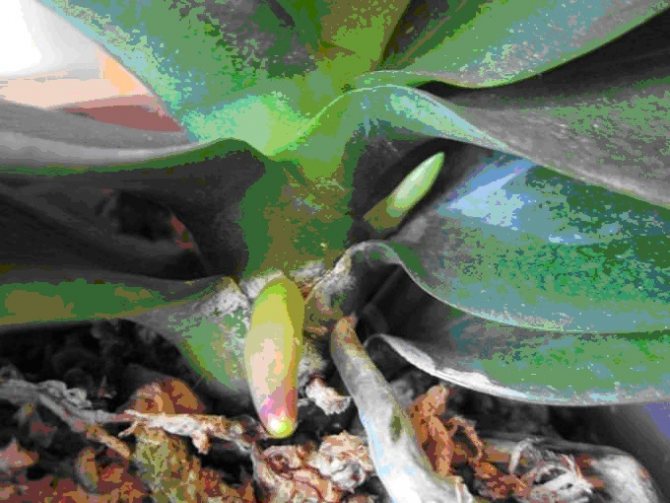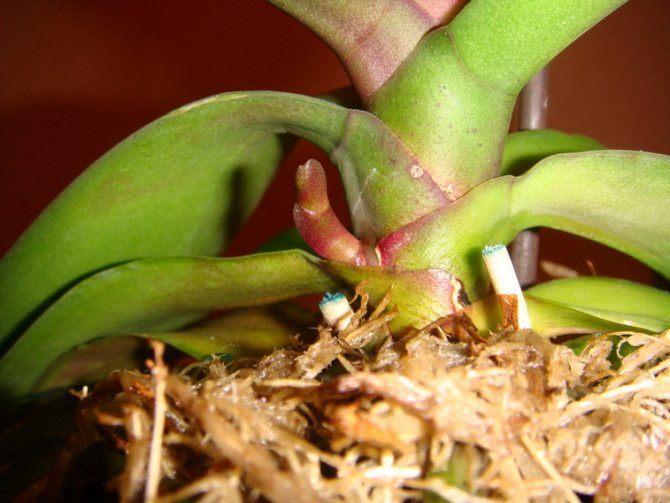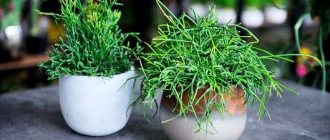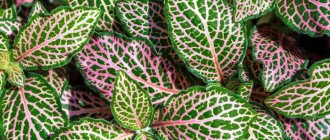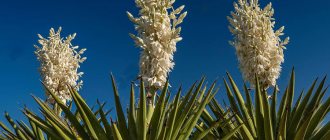Correct lighting
Proper care of an orchid begins with choosing the right place. Lighting there should be abundant, but diffused: the direct rays of the sun should not fall on the flower. In summer, especially in sunny weather, it can even be slightly shaded with a matte film or translucent plastic. This is especially important in the spring, when the plant is just beginning to rebuild after short winter days.
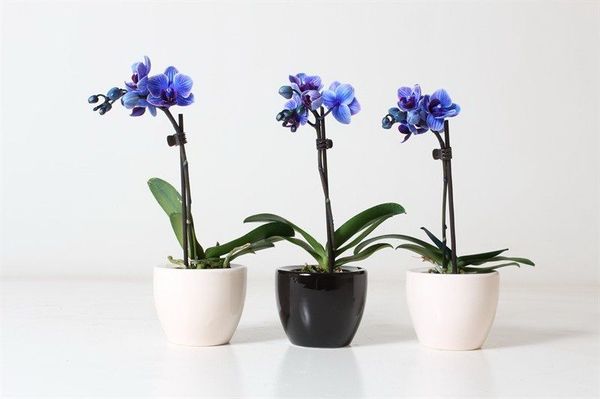
But the soft autumn sun will not harm, but on the contrary, will give the plant the strength to prepare for winter. Shading can be removed at this time. In order for phalaenopsis at home to bloom profusely and for a long time, the daylight hours must be at least 12 hours.
During the cold period of the year, you should take care of artificial lighting. Fluorescent or phytolamps are a good choice. The backlight is especially important if the plant has thrown out a peduncle: by directing the main light of the lamps to it, you can make the home orchid bloom in winter.
In this case, the place should be constant - frequent rearrangements, even small movements of the pot will become stress for the orchid and the period of its flowering may be reduced. A place near the southern or southeastern windows is well suited.
Possible problems
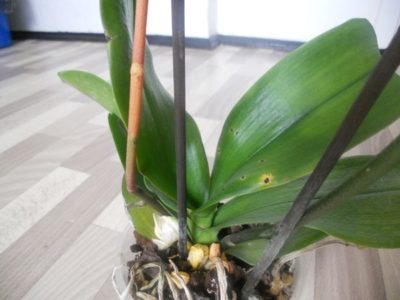

It often happens that the arrow is released, but does not develop further, but seems to freeze in place. Or another option is possible: the peduncle has grown, but began to dry out. The reasons for such phenomena are directly related to the fulfillment of the basic requirements for the maintenance of an orchid.
Among them:
- improper lighting;
- excess or lack of fertilizers;
- problems with the root system;
- excessive or insufficient watering;
- infectious diseases and pests;
- wrong temperature conditions.
Temperature regime
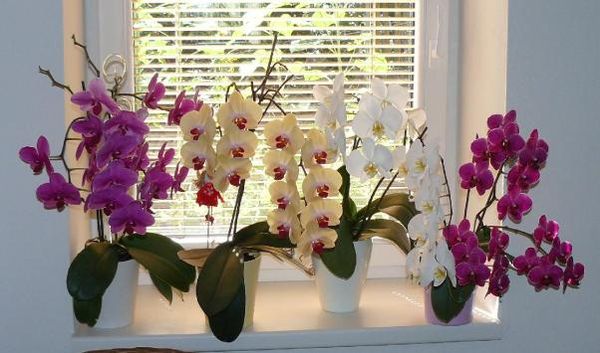

Different types of orchids are preferred at different temperatures. For thermophilic phalaenopsis and Cattleya, the range of 15–32 ° C is suitable in summer, 15–18 ° C in winter. An important rule: daily temperature drops for them should be no more than 3-5 ° C.
But dendrobiums, laelias, Venus shoes, miltonia and odontoglossums are more fond of relative coolness. For them, it is desirable that the maximum temperature in the summer in the house does not exceed 22 ° C, and in winter it is kept at the level of 12-15 ° C.
It is advisable that during the flowering period of orchids the temperature is maintained that is optimal for a given variety. Moreover, if you want to enjoy a luxurious flowering, you need a difference between day and night temperatures of several degrees - it stimulates the setting of buds. However, such changes should not be sharp, otherwise the plant may get sick.
How to care?
In order for an orchid to release an arrow and please for a long time with its flowering, you need to provide it with comfortable living conditions. To do this, you should:
- Maintain the temperature in the room in summer: + 22-25 ° C, in winter + 16-18 ° C.
- Place the pot in the sun, but not under the scorching rays. It is recommended to shade the window in summer.
- Maintain humidity during the growing season within 50-60% with a household humidifier, and for the release of the peduncle - 30% - 40%.
- Ventilate the room regularly.
- Water once a week, in between, the soil should dry out completely. For the release of the peduncle, the "dry" period can be extended.
- Use warm and purified water.
- Fertilize orchids with fertilizers containing potassium and phosphorus.
From our other publications, you will learn what role a pseudobulb plays in the life of a plant, what is a growing point and why the roots of a plant grow upward.
The real joy of the grower is the moment the orchid arrow appears. But it is important to remember that the key to the future successful flowering of a plant is compliance with the basic requirements for keeping conditions epiphyte, especially at the moment when the plant is most vulnerable.
If you find an error, please select a piece of text and press Ctrl + Enter.
Regularity of watering
To take good care of an orchid, you need to follow the watering rules. When and how to water these flowers?
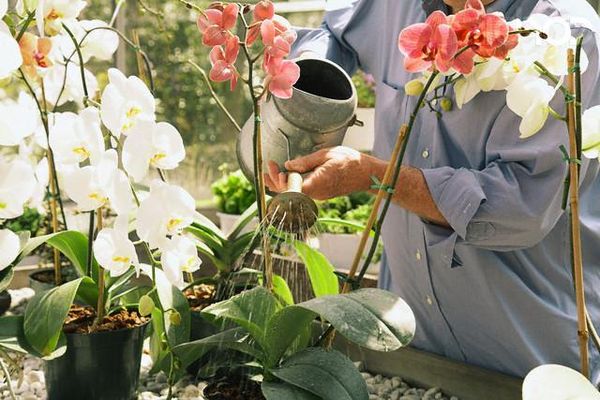

Moisture requirements vary from species to species, as do temperature requirements. Those who care for phalaenopsis know that these are plants, like Venus's shoes, prefer slightly moist soil; but dendrobiums and oncidiums need watering only after the soil has completely dried out. It is advisable to water the Phalaenopsis orchid especially often when it blooms or throws out peduncles, but it is important that the water does not stagnate - this can slow down the development of buds and even lead to decay of the roots.
In the question of how to water a flowering plant, you need to pay attention to the fact that the water is at room temperature and at the same time sufficiently soft. If conditions and ecology permit, you can use melt or rainwater, if not, you need to boil it or freeze it yourself at least once before watering.
You can determine what home orchids want to "drink" by the roots: when they dry, they acquire a light gray tint, which means the flower needs watering. If the roots are green, then they are still wet. On average, 3-4 waterings per week will be needed in summer, 1-2 in winter.
In caring for orchids, two types of watering are allowed: the traditional upper one from a watering can or shower, so that the water will water the soil from above (after that, it is imperative to drain the leaked liquid from the pan), or the lower one, when the phalaenopsis pot is placed in a container with warm water for about 10 minutes ...
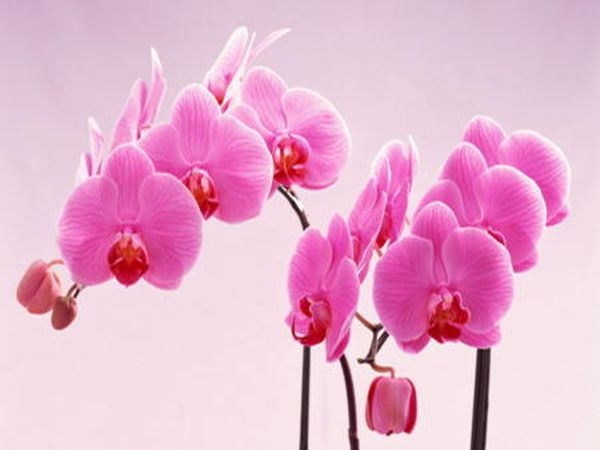

It is possible to determine that the plant is suffering from insufficient watering by the wrinkled pseudobulb.
General rules for caring for an orchid
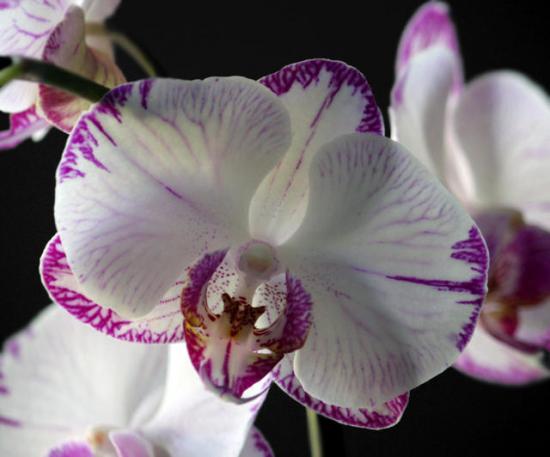

After the whole transplanting process has come to an end, the plant must be watered immediately. For this, water should be boiled in advance and a certain amount of nutrients should be added. You can use potassium, magnesium or nitrogen for this.
In the prepared nutrient solution, lower the pot with the orchid for 20-30 minutes. In the future, watering is carried out rarely as needed. It is important to ensure that the soil is completely dry between waterings.
Air humidity
To properly care for a blooming orchid at home, it is important to maintain normal air humidity. Usually, indoor conditions are enough for flowering orchids: the permissible indicator can range from 40 to 70 percent. But if it falls below, the flowers may begin to fall off, and the plant itself will stop growing. This is possible both in summer in the heat and in winter, when the batteries dry out the air. In this case, it is better to use a humidifier, put wetted expanded clay or just an open container with water next to the flowers.
For some species, it is allowed to spray the leaves from a spray bottle, it is only important that water does not get into the leaf axils - it will stagnate there and cause the plant to rot. It is best to get maximum moisture to the bottom of the leaf, where the stomata are located, which absorb water. It is necessary to spray the orchid during the day, with good, but in no case direct lighting, otherwise a severe burn of the plant is possible.
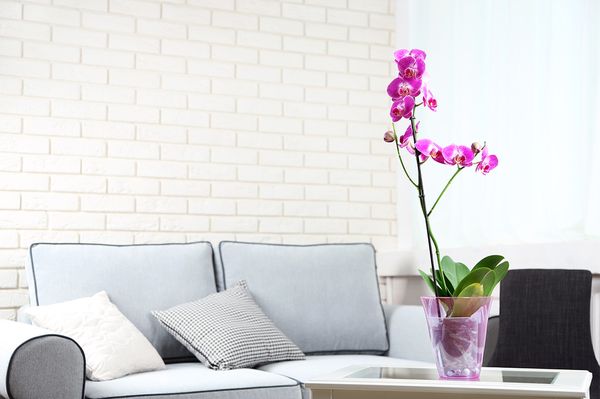

With high air humidity, whether natural or artificial, you need to often ventilate the room, otherwise the plant can infect the fungus.
What to do when diseases appear
If the care of the plant is carried out incorrectly and the rules and recommendations are disregarded, the orchid can get sick. Diseases in this flower are a problem, but even from such a situation there is a way out.
It is quite easy to recognize a disease such as anthracnose. It is caused by various types of fungi. On the leaves of the plant, dark red spots with small black dots are observed.
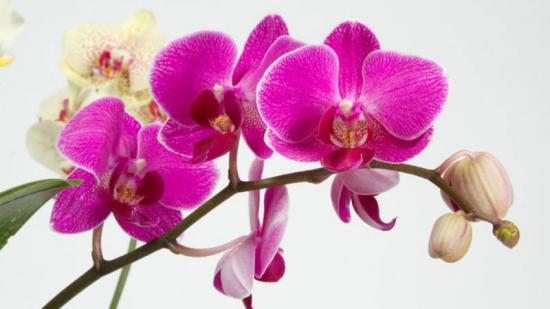

To avoid further damage, these leaves should be trimmed and sprinkled with ash or crushed charcoal. With this disease, the plant is treated with a special solution containing copper.
If the leaves and shoots of the orchid are covered with brown watery spots, then this indicates a defeat with brown rot. In case of minor damage, the damaged areas should be trimmed and covered with ash. Treat the entire plant with a special copper-containing preparation.
If the plant begins to blacken, and the shoots and roots die off, then the reason for this is the very low temperature. In this case, it is difficult to cure an orchid. With high humidity indoors, rot may appear on the shoots of the orchid, and spots on the leaves. The affected leaves are cut off, disinfected. Ventilate the room very often.
Pot and soil requirements
Important conditions for caring for the Phalaenopsis orchid are a translucent pot and special soil. The pot must transmit light, since in orchids, not only the leaves, but also the roots are involved in photosynthesis. In addition, if the pot is not smooth, plastic, but rough (for example, ceramic), the roots can grow to it, which injures them during transplantation.
Substrate for orchids can be purchased specialized or made independently from sphagnum moss and bark of conifers. For mature plants (over three years old), clean bark is also perfect.
How did the flower sprout?
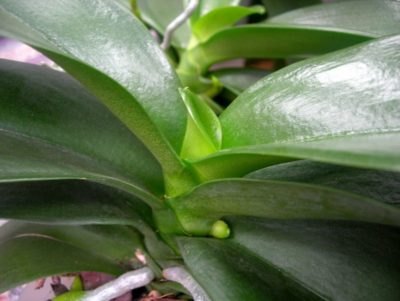

After a period of active growth of roots and leaves, the orchid begins a dormant phase, during which the plant releases an arrow. Most often this period occurs in autumn, but in good conditions the orchid can bloom several times a year.
An orchid shoot is released from the leaf axilusually the lowest. The leaf axil is the place where the orchid leaf comes into contact with its trunk. The arrow breaks through the leaf and tends upward. The appearance of an arrow occurs under the influence of many factors: lighting, temperature, watering. If favorable conditions are not created for the orchid, then the formation and release of the peduncle will be impossible.
Plant transplant
A newly acquired plant needs immediate replanting only if the supplier has used pure sphagnum as soil. If the substrate properly includes bark, you don't have to disturb the orchid or increase its stress.
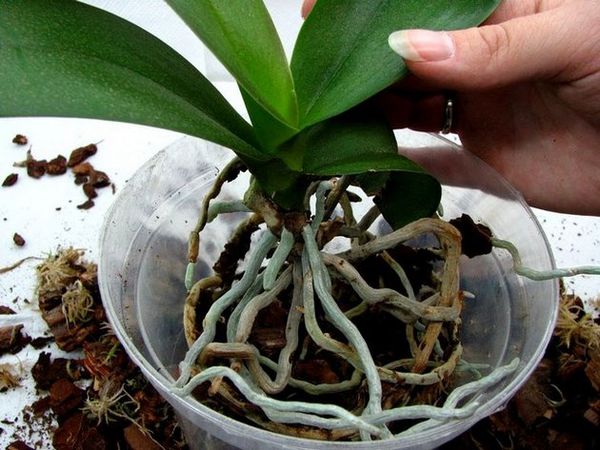

On average, a new transplant for a home orchid will be required in one and a half to two years, depending on the species, or in the case when the roots are clearly cramped.
It is advisable to transplant these plants after flowering. After transplanting, the substrate should never be tamped down - this can severely damage the roots, moreover, they need air. After transplanting, the orchid should not be watered for five days (during this time, wounds will heal on the roots).
Stimulate the growth of new
With this option, it is necessary to cut the peduncle under the "stump". It's simple: we remove the old ones, we expect new ones to appear, subject to the recommendations "how to help an orchid bloom."
Prepare a tool with a sharp blade for trimming. Disinfect it, sprinkle the cut area with crushed coal.So you will save your plant from various kinds of diseases. However, not everyone adheres to this recommendation.
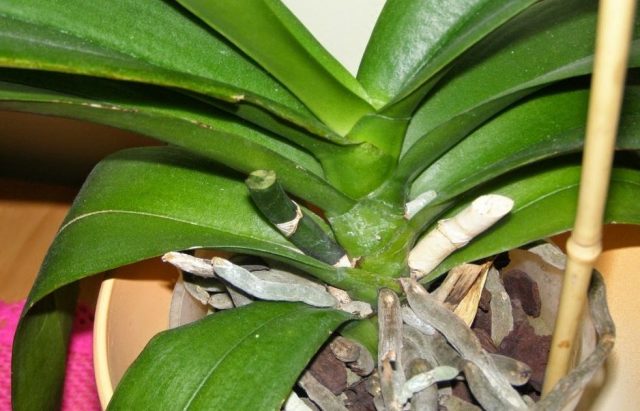

Fertilization and feeding
In such a matter of how to care for orchids, the question of feeding is rather controversial. Some experts are sure that the plant can get all the necessary nutrients from the substrate, you just need to change it at least once every two years. Others believe that fertilizers are important for flowering plants, especially phosphorus and potassium.
In any case, top dressing is recommended only when, when the plants are actively developing and blooming, and this should be done no more often than once every 2-3 weeks. At the same time, a special rule for caring for orchids is that about a week after fertilization, the soil must be rinsed in order to remove unabsorbed mineral salts from it. This can be done with a shower. When the water begins to drain into the pan, pour it out and place the pot on a wire rack to dry.
If the orchid has faded and the peduncle begins to dry out, it should be removed - this will help the new develop. If it remains green, you should not cut it off - the buds can form on it one more time.
Bloom extension
When hydrangea blooms - flowering period, how long does it bloom
Long flowering is possible when the following conditions are met:
- It is not worth replanting the plant.
- It is necessary to ensure the temperature difference between day and night. On average, it should differ by 4-6 degrees. The temperature can be 20-24 ℃ during the day and 14-18 ℃ at night. In winter, ventilation is required. Orchids are sensitive to drafts.
- Air humidity. Orchids love a normal humidity of 60%. If there is not enough moisture, the plant stops blooming. To prevent this, the flower is additionally sprayed with water during dry periods. Or a humidifier is being used.
- Excessive moisture can negatively affect the ability to produce new pedicels in the future. A holy middle is needed here.
- The orchid is planted in a transparent pot. This gives light to the roots and allows monitoring the health of the root system.
- To stimulate the appearance of flower buds, it is recommended to use compounds based on phosphorus and potassium.

